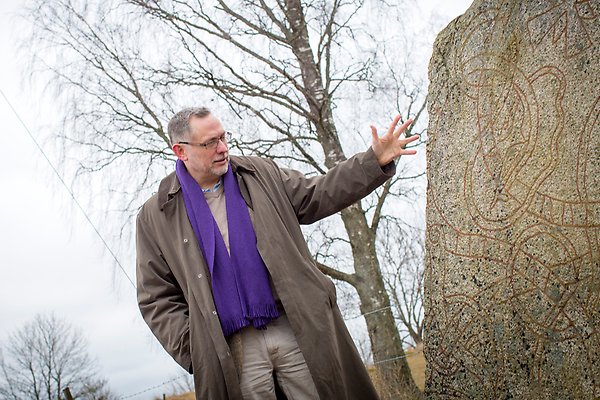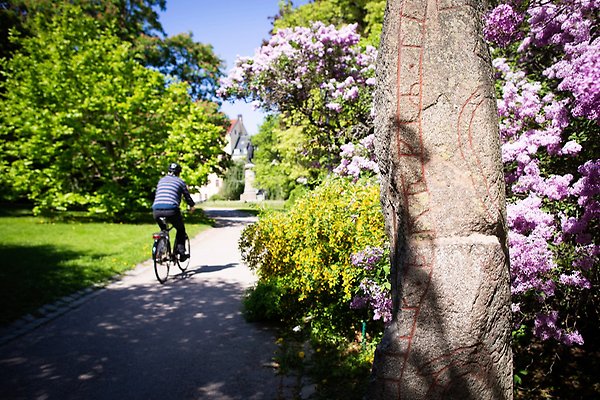Runes: Thousand-year-old messages carved in stone
Reading runic inscriptions is like travelling a thousand years back in time. Runes intrigue us and entice us to try to understand the people and society of that time – and perhaps they can also help us to see our own time from another perspective.
Rune researchers attempt not just to interpret the inscription itself but to add a social dimension to our understanding of the words. How did people live and think a thousand years ago? What can they tell us? Old and recent finds await interpretation to reveal more about our shared history.
Support an endowed chair in runic studies
Support current runic research projects

Prof. Henrik Williams. Photo: Mikael Wallerstedt.
The earliest written culture in north-western Europe
Runology is the science of reading and interpreting runic texts, which are the earliest written culture in north-western Europe. The inscriptions are often the first original texts and sometimes the only written testimonies at all. Interpreting these thousand-year-old messages is the goal of runology. The research is highly important for many areas of historical scholarship. Runic material is unique as a written medium in an otherwise completely oral environment, which makes it very relevant for other areas of research. What is more, runic studies are topical, not least because of the great interest in the Viking Age, from which the inscriptions are the only contemporary documents. The political charge carried by runes and their use in modern cultural expressions all around the world also add to their significance.
There are nearly 7,000 inscriptions dating from the second century until the end of the Middle Ages, dispersed throughout Europe. Most of them occur in Scandinavia, particularly in Sweden and most of all in the Uppland region around Uppsala. Runes mainly survive as inscriptions on stones, but they are also found on bone, wood and metal.
In the popular mind, runic material is primarily associated with the Viking Age. In research terms, there are links to the history of religions, ethnology, art history, archaeology, medical history and other areas. Runes have been studied in Uppsala since the late 16th century. Runology at Uppsala University is a small discipline in terms of the number of researchers, yet it is world-leading and a node for all international runic research. More doctoral degrees in runology have been taken here than anywhere else in the world, and the subject is taught at Bachelor’s, Master’s and PhD levels.
"Runic material is unique as a written medium in an otherwise completely oral environment, which makes it very relevant for other areas of research.”
Henrik Williams, Professor of Runology

Runor: A digital platform with all runic inscriptions
The digital search tool Runor provides access to all known runic inscriptions around the world. In Sweden, there are over 4 000 runic inscriptions, telling us about life from the year 200 and onwards. Uppsala University's Department of Scandinavian Languages has collected and digitalized all Nordic rune inscriptions. The results became the Scandinavian Runic Text Database, which was aimed at researchers. Together with the Swedish National Heritage Board, this database is now expanded and easy to use for anyone interested in runes on The Runor platform launched on 3 December 2020.
The platform lists all known runic inscriptions in Nordic languages around the world, over 7 000, with translations to old Nordic dialects and English. Theres is also information about their dating, the carver’s name (if known), ornamentation, links to its antiquities record, the stone’s position and pictures of it. A GPS feature lists inscriptions near your location.
Visit the Runor platform by the Swedish National Heritage Board
